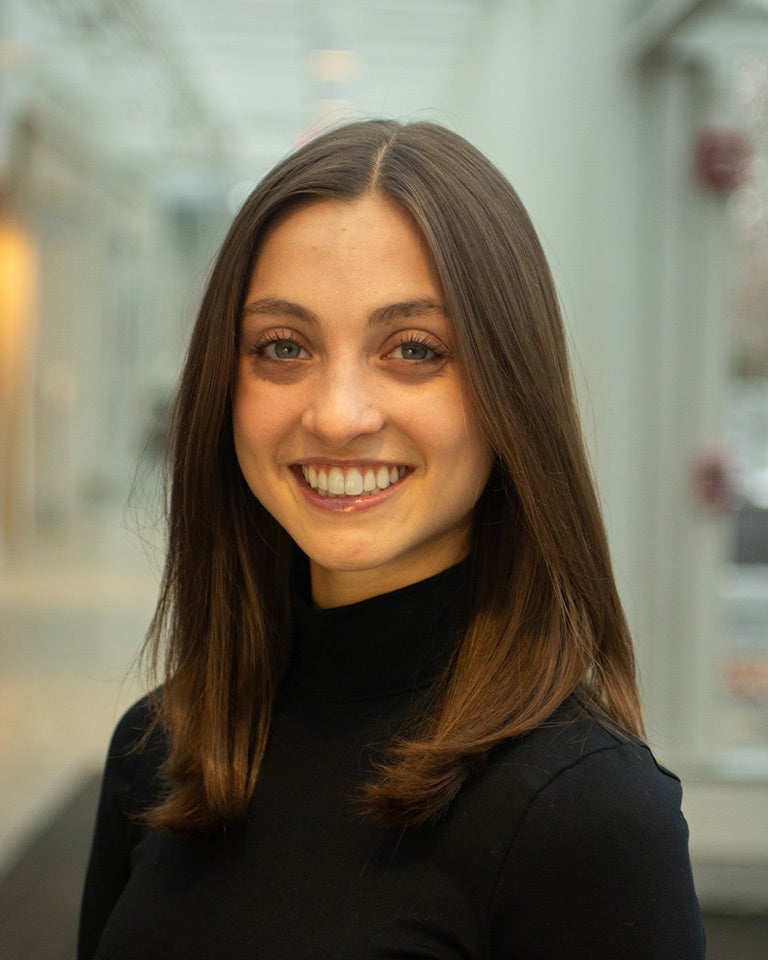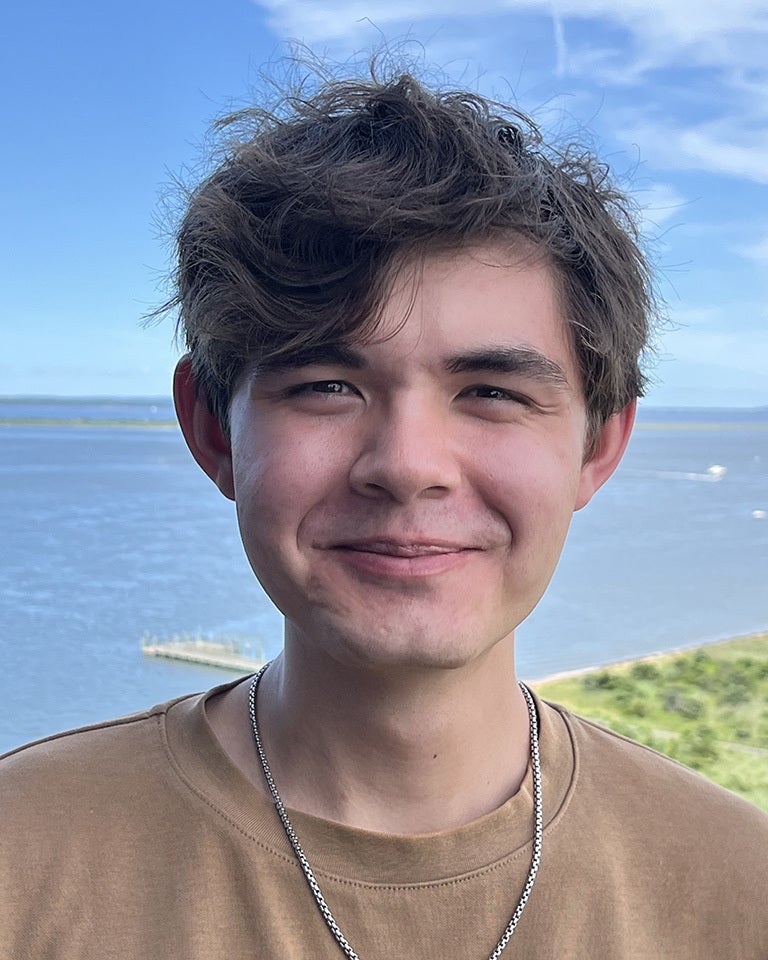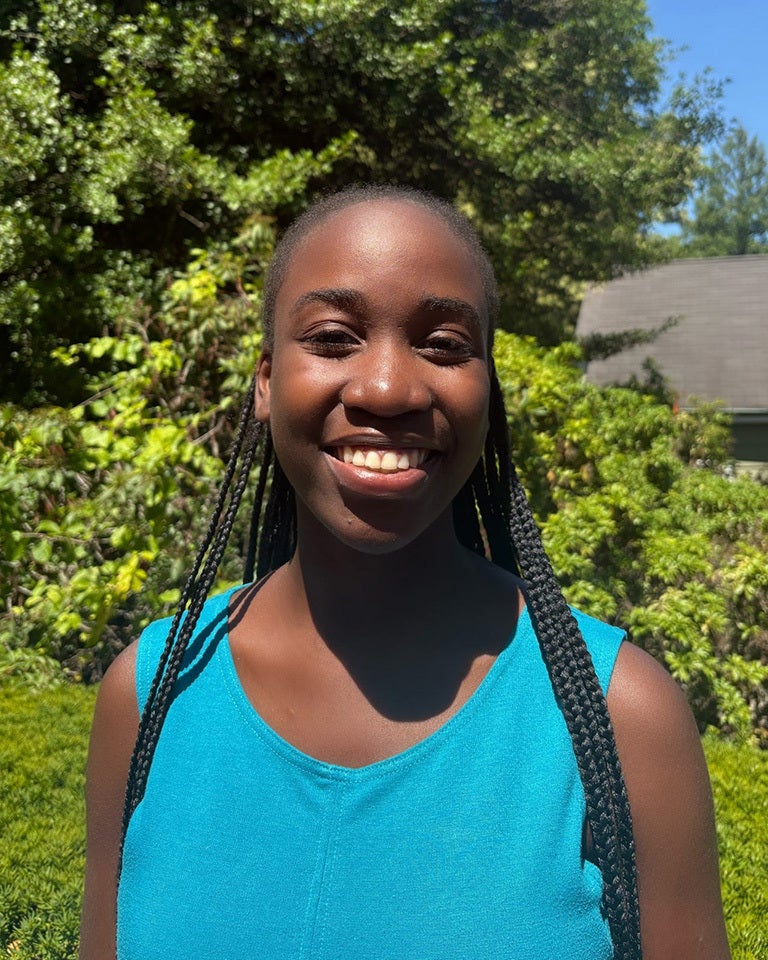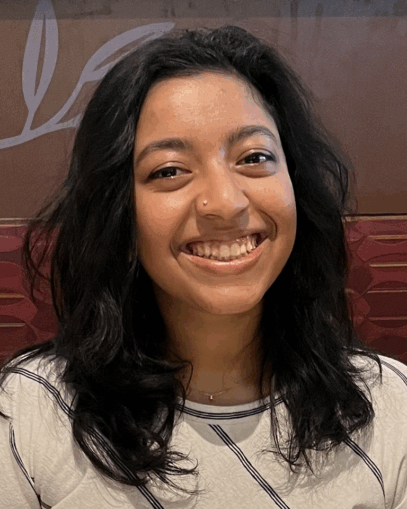Undergraduate Research Program
The Undergraduate Research Program (URP) at CSHL provides an opportunity for undergraduate scientists from around the world to conduct first-rate research. Students learn the scientific process, technical methods and theoretical principles, and communicate their discoveries to other scientists. Approximately 20 students come to CSHL each summer for the program, living and working in the exciting Laboratory environment.
URP participants work on an ongoing research project in one of CSHL’s expert labs. Research at CSHL focuses on:
- Molecular Biology & Cancer
- Genetics & Genomics
- Neuroscience
- Plant Biology
- Quantitative Biology
In addition to doing research in the lab, URP participants attend a series of specially designed workshops, seminars and collegial events. Workshops focus on learning particular skills, such as Python programming, while seminars cover research topics, responsible conduct of research, and career development. At the URP Symposium at the end of each summer, students present their research to the entire CSHL community.
URP participants live and work among CSHL scientists. They are invited to all Laboratory social activities, including an exclusive dinner with CSHL President Bruce Stillman. On weekends, students are free to explore nearby New York City or the sandy beaches of Long Island.
By the end of the summer, URP participants have first-hand experience of a career in scientific research.
The 2026 URP Program will be held Monday, June 8 – Saturday, August 8, 2026.
2026 Applications are now open
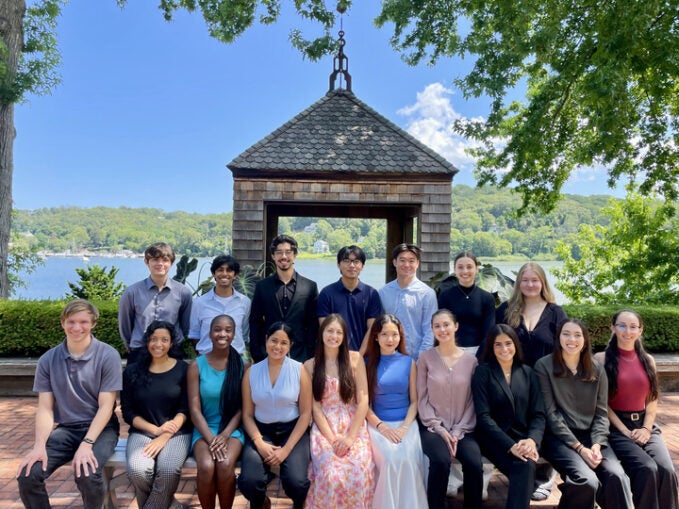
Scientific Research
All URP students undertake an original research project, mentored by one of CSHL’s outstanding research faculty. Students have access to the Lab’s state-of-the-art research facilities, including extensive resources for genomics and microscopy. At the end of the Program, students write a scientific manuscript about their summer work. Some of these become part of peer-reviewed scientific publications.
Bioinformatics and Computational Neuroscience Workshop
CSHL’s URP presents students with a two-part workshop in Bioinformatics and Computational Neuroscience.
Hands-on programming workshops
These workshops (1 per week) train students to analyze and visualize biological data in Python.
Lecture series
The lecture series consists of sessions focused on important topics in bioinformatics and computational neuroscience. Sessions include:
- Applications of computational analyses in biology
- Crop improvement through bioinformatics
- Modeling framework for interpreting deep neural networks in functional genomics
Training in Scientific Communication
The Program offers lectures on how to give a scientific talk. In the course of the summer Program, students prepare a research abstract and a scientific report, and present two research talks for the entire CSHL scientific community.
Career Development
URP participants attend a series of lectures and panel discussions aimed at informing them about the process of pursuing a research career or a variety of non-research scientific careers. Sessions include:
- Faculty perspectives on research careers
- Graduate school and fellowship applications
- Non-research career panel
Responsible Conduct of Research
Before starting work in their laboratories, URP participants attend a Responsible Conduct of Research workshop, which covers ethical issues in biological research. Students are also instructed in laboratory safety.
Current sophomores and juniors are eligible. Applications must be submitted online by January 15.
Online Application
- All applicants must complete an URP application form with a personal statement online.
- Faxed, mailed, or emailed applications are not accepted.
- You may submit your application before the recommendation letters have been uploaded by your referees.
- Once an application has been submitted, changes cannot be made. Please review your application carefully before submitting.
- To use the online application system, you must first register as a user. On the main login page, there is a link that says “New User? Register Here” to the right of the “Go” button. If you do not see this option, make sure your internet browser is up-to-date and/or try a different browser (Chrome, Firefox, Safari). If you continue to experience problems, please contact Embark, the application manager at help@embark.com
Personal Statement
- Your personal statement is limited to a single page – approximately 600 words or 3,250 characters (including spaces), single-spaced. You should use a minimum of 1-inch margins.
- You should ensure that your statement is legible. We would appreciate a minimum of 11-point font, preferably sans serif (such as Helvetica). Other traditional fonts, such as Times New Roman, are also acceptable.
- Please give a brief description of why you wish to participate in the Cold Spring Harbor Laboratory Undergraduate Research Program. This should include: (i) your career interests, (ii) how the URP can help you achieve your goals, (iii) details of any pertinent research experience, employment, extracurricular activities, and (iv) any other information you believe to be relevant to your application. You may also list 2-3 research mentors you would like to work with in your personal statement.
Dates and Deadlines
- The deadline for receipt of completed applications, including letters of recommendation, is January 15 at 11:59 pm (23:59) Pacific Standard Time (equivalent to January 16, 07:59 UTC/GMT). Applications will not be reviewed if they are received after the deadline.
- Recommendation letters will not be accepted after the application deadline. Please make sure your referees are aware of the January 15 deadline when you ask them to write a recommendation. Most referees need at least a month to complete a letter. If your referee has any problems uploading the letter to the online application system, they should contact help@embark.com directly.
- Notification of application status will be sent by the end of March.
Eligibility
- Foreign students are eligible only if they are currently enrolled full-time at a U.S. college or university on a student visa, or, in limited cases, if they attend a foreign university that has a pre-existing agreement with CSHL.
- Students should have a strong academic background in a science. Although the Program emphasizes the biological sciences, students with engineering, chemistry, computer science, math, or physics backgrounds are also encouraged to apply.
- Students must be returning to an undergraduate degree program following their URP summer research experience; current sophomores and juniors, or the equivalent, are eligible. Only in exceptional cases will first-year undergraduate students, with prior independent research experience, be considered.
- Previous laboratory research experience will help your application but is not required.
- If you are accepted into the Program, and your academic semester conflicts with the program dates, we will discuss how your academic schedule can be accommodated. For instance, students have arranged with professors at their home university to take their final exam(s) at CSHL. Please note that all URP researchers are expected to participate in the program as a cohort and must therefore plan to be at CSHL during the dates listed on the website.
Grades & Transcripts
- Official transcripts are not required.
- There is no minimum GPA required. Successful applicants generally have GPAs around 3.5 or higher in their science and math courses.
- If your GPA is not on a 4.0 scale, then please convert your grade to a 4.0 scale. If your institution does not have a standard scaling, then calculate by dividing your average mark by the maximum possible mark and multiplying by 4.0.
International Applicants
- Students of any nationality are eligible for the program.
- TOEFL or IELTS scores are not required for admission to the URP program.
- If your grades are not based on a 4.0 scale, please note your institution’s grading scale and the actual class mark you received on the application. Also indicate the best possible mark. For example, if your university scale is 1 to 5, then note your grade as X/5, 1=best.
Recommendation Letters
- Applicants must arrange for two recommendation letters from professors – preferably in math or science – to be submitted online. We do not accept more than two recommendation letters.
- If you have previous research experience, recommendation letters from professors with whom you have worked in a lab are especially encouraged. Letters from graduate students or postdocs in the lab are less effective.
- Faxed, mailed, or emailed recommendation letters are not accepted.
- Your referees will upload their recommendation letters directly to the online application system manager. When you fill in the application, you will submit the email addresses of your referees. Your referees will receive an email with instructions on how to upload their recommendation letter online. Please tell your referee that they will receive an email from the Embark application system so this notification email does not end up in spam.
- You may submit your application before recommendation letters have been uploaded by your referees.
- Recommendation letters will not be accepted after the application deadline. Please make sure your referees are aware of the January 15 deadline when you ask them to write a recommendation. Most referees need at least a month to complete a letter. If your referee has any problems uploading the letter to the online application system, they should contact help@embark.com directly.
Stipend
Students receive a stipend of $7,000. Room and board expenses are covered.
Housing Environment
URP participants reside in the cabins on the Cold Spring Harbor Laboratory campus. Each cabin provides housing for 8 individuals, with two single-gender students per room. Also, each room has a full bathroom. All linens, blankets, pillows, and towels are provided, along with full housekeeping services. Two arm chairs and a small table are available in each cabin, and one telephone is available in the common area. The cabins are also equipped with Wi-Fi internet access. All cabins are fully air-conditioned.
Meals are served three times a day, seven days a week in the Blackford Dining Hall. Vegetarian and Vegan options are available at all times and our kitchen will make every effort to accommodate any special needs.
Gym equipment and weights are available in the exercise room located in the lower level of the Dolan Hall. Also, washer and dryer facilities are available in Dolan.
The Laboratory owns canoes and kayaks, available for URP student use. All participants are free to use our tennis and volleyball courts, running and hiking trails, swimming pool and private beach.
CSHL holds volleyball tournaments during the summer where different laboratory buildings square off against each other. URP students are invited to join these teams, compete against the graduate students throughout the summer and the faculty at annual URP vs. PI (Principal Investigator/Lab Head) tournament, held at the end of the summer.
What past URP participant(s) said about their summer at CSHL.
Lindsay Bauer, Martienssen Laboratory
The Undergraduate Research Program (URP) at Cold Spring Harbor Laboratory played a crucial role in helping me develop the technical skills and knowledge necessary to prepare for my future career in scientific research. I worked in Dr. Rob Martienssen’s lab, studying the role of pseudouridylation on easiRNA mobility in Arabidopsis thaliana. This experience was invaluable in strengthening my technical skills and exposing me to the opportunities for a career in Plant Molecular Biology and Genetics.
Throughout the program, I refined my laboratory techniques, expanded my knowledge of plant genetics, developed presentation skills, and established connections with colleagues across various scientific fields. Along with the supporting staff and fellow URPs, the scientific community present at Cold Spring Harbor was welcoming and informative. In the Martienssen Lab, there was an atmosphere of collegiality. Lab members were generous with their time, assisting me with my questions. There was a drive for all lab members to work together to achieve a common goal of scientific excellence. This experience has helped me develop into a stronger researcher who feels more prepared to enter graduate school. Beyond the laboratory, I had the privilege of attending seminars led by leading researchers and completing a Python course to enhance my computational skills.
I am deeply grateful to my PI, mentor, and lab members for this incredible experience. Although this program only lasts a summer, the friendships, memories, and knowledge I gained during these two months will last a lifetime.
Garrett Goodrum, Banerjee Laboratory
My experience as an URP was truly incredible. I had the great opportunity to work in the Banerjee Lab, which studies Alston’s singing mouse as a model for behavioral evolution at the circuit level. During my time at CSHL, I mainly worked on modeling the vocal development of these mice (who are super cute) and was able to improve my coding and data analysis skills. I also had the chance to work directly with the mice and run a small experiment of my own, testing whether the mice would sing in response to unpitched playback. Through both success and setback, my mentor Kristina Shaw and PI Arka Banerjee supported me. Kristina was able to answer my questions and found a great balance between helping me and letting me overcome roadblocks myself. Arka made sure to check in on me frequently not only about my project but also about how I was enjoying the program. Talking with them has really improved my ability as a scientist, asking questions, testing those questions, and sharing what I found. Despite its short nature, the URP program gave me a good sense of what graduate school might be like as I navigate my future.
In addition to the research, what I loved most about the program was CSHL’s environment. Every day I could learn so much by attending a lecture or seminar whether it was in my field or a completely different one. Everyone was happy to answer my questions and give me career advice, and I quickly developed friendships with my fellow URPs. I know I’ll remember the long nights we spent together on our projects and our adventures across the boroughs of New York for years to come.
Roma Nagle, Koo Laboratory
My summer as a CSHL URP student was one I will never forget. While I’m grateful for all the knowledge I gained in just a short nine weeks, my most valuable takeaways were from the people around me, who opened my eyes to what my future in science could look like. With the support of my mentor, Masayaki (Moon) Nagai in the Koo lab, I explored the intersection of gene regulation and machine learning, a research area I had no prior knowledge on. Moon and Dr. Koo were incredibly patient as I caught up to speed with the latest literature, and encouraged me to lean on the domain knowledge I already had to shape my project. By the end of the program, I designed a pipeline to optimize mutagenesis libraries for maximum informativeness about the regulatory grammar of a target sequence.
Beyond my project, the culture in and out of my lab was exceptionally welcoming. Everyone in the lab was so kind and approachable, and they taught me a lot about what to expect as a graduate student in computational biology. In addition to regular meetings with my mentor, I participated in deep learning reading groups and watched weekly NLP lectures with my lab over lunch. I also had insightful conversations with students and PIs outside the Koo Lab about their work, or even my own ideas. This was truly a testament to CSHL’s collaborative spirit that defines the institution.
This summer would not have been the same without the rest of the URP cohort. We bonded instantly over dinnertime, talking about our days in the lab, and on weekend trips exploring New York City. As an URP, you are surrounded by peers who share a deep enthusiasm for science, and by the end, you’ll have made lifelong friends who will go on to make remarkable contributions as scientists.
Temiloluwa Owoade, dos Santos Laboratory
The Undergraduate Research Program at Cold Spring Harbor Laboratory is truly one of a kind. From the very beginning, I was immersed in an environment filled with some of the world’s most forward-thinking scientists. The passion for discovery was everywhere, whether in the lab, over coffee, or at the numerous lectures, conferences, symposiums, and panels held each week. This constant exchange of ideas ensures you’re always learning something new, within or outside your field of interest. It shapes a unique community where curiosity and learning thrive.
Over the summer, I worked in the Dos Santos Laboratory researching breast cancer. Under the guidance of my mentor, Lucía Perez, I gained a deeper understanding of the field and approached my research with a clear vision of both my goals and the significance of my findings. Beyond the science, the lab was a place of genuine care and camaraderie. My PI, Camila dos Santos, along with the rest of the team, offered advice and encouragement that helped me clarify my professional path. They celebrated my successes—big and small—including surprising me with a cake on my birthday. It was clear that they valued not just my contributions as a researcher, but also my well-being as a person.
Of course, we knew how to have fun, too. We explored nearby towns and the city, played arcade games in Dolan, went kayaking on weekends, and held spirited volleyball matches whenever we could. Even study sessions were filled with laughter (and plenty of candy in Urey Cottage), as we taught each other concepts, equations, experiments, and theories.
This summer was unforgettable. I am deeply grateful for the opportunity, the friendships I built, and the memories I made. I want to thank the program directors and coordinators, my fellow URPs (Go TwURPs!), the entire Dos Santos Lab (Camila, Lucía, Emma, Chris, Dhivyaa, Deep, City, Mike, Mckenzie, Rebecca, and Mariela) and my sponsors for making this experience possible.
Ananya Sundararajan, Albeanu Laboratory
My summer experience as a part of the Cold Spring Harbor Laboratory Undergraduate Research Program (URP) was truly transformative. I had the opportunity to work in the Albeanu lab on the 3D reconstruction of anatomical structures in the olfactory system called glomeruli. My project had implications in localizing olfactory input, ultimately allowing for the investigation of information processing logic in the olfactory system.
Coming from a more computational background, it was important to me that I was able to gain some experience in wet lab techniques. My PI, Dr. Florin Albeanu, and my mentor Zarmeena Dawood, were very supportive of my interests in broadening my experimental skills. While working on my project and learn new image processing techniques, I had the opportunity to observe injections as well as learn cryosectioning. Additionally, I was not only able to learn and utilize light-sheet microscopy to image a cleared brain, but I was also able to obtain ground truth volumetric data for my reconstruction project. Throughout the summer, I felt incredibly supported by everyone in the lab. Whether it be through advice on graduate school, help troubleshooting aspects of my project, or feedback on presentations, my lab members were always willing to help.
The environment at CSHL is truly unique. From seminars to casual conversations, I was constantly exposed to a wide range of scientific ideas and approaches. Being immersed in such a setting helped me better understand the research I’d like to pursue and solidified my decision to apply to graduate school.
Outside of research, my fellow URPs and I bonded through late-night work sessions, movie nights, volleyball, and weekend trips to Huntington Village and the city. Overall, this summer experience gave me not only amazing friends, but also a greater passion for research and a better understanding of the career path I want to pursue.
Abdul-Malik Zekri, Zador Laboratory
Spending the summer at Cold Spring Harbor Laboratory through the URP was one of the most rewarding experiences I have had so far. From the beginning, it felt like stepping into a theme park for science, a place fully dedicated to discovery and innovation. It felt like an oasis of knowledge, where the entire environment encouraged curiosity and learning. The campus is beautiful, and I took countless walks across the grounds and down to the beach, which became a way to clear my head and take in how special it was to be in such a setting.
I joined the Zador Lab, where my project sat at the intersection of neuroscience and artificial intelligence. In plain terms, I was exploring whether ideas from how the brain regulates its own activity could help artificial networks learn more flexibly across tasks. The learning curve was steep, but over the weeks I grew more comfortable navigating complex code and began to see how rewarding it is to wrestle with a tough problem until it starts to make sense. That experience gave me a real sense of what research feels like: persistence, patience, and the small breakthroughs that make the challenges worth it.
Equally important was the scientific community at CSHL. Science did not stop at the lab bench. NeuroAI seminars, chalk talks, and journal clubs with my peers constantly sparked new ideas and pushed me to think in different ways. My notebook, which had been only half full after months of notes during the school year, quickly filled to the last page this summer from the flood of ideas and discussions. At the end of the program, presenting my project on the same stage where we had heard Nobel Prize winner Emmanuelle Charpentier speak earlier in the summer was a humbling and unforgettable moment.
What I will remember most, though, is the time I spent with my fellow URPs. Through nightly group dinners at Blackford Hall, long hours working together in Urey Cottage or the Freeman and Marks buildings, and plenty of late-night conversations that went from science to life and back again, I built connections and memories that became the heart of my summer. Outside of research, we played volleyball, foosball, pickleball, and went kayaking, had movie nights, and explored Huntington Village and New York City together. Walks around campus with friends often turned into some of the best conversations of the summer.
Looking back, the URP was transformative not just because of the research, but because of the people and the place. I left with new skills, lasting friendships, and a clearer picture of the kind of scientist I want to become.
Since 1959, the URP Program has been offering undergraduate students a unique opportunity to study with CSHL’s renowned scientists. Some of our notable alumni include Nobel laureate Dr. David Baltimore (California Institute of Technology), Dr. Gerry Rubin (HHMI, Janelia Farm Research Campus), Dr. Alfred Goldberg (Harvard Medical School), Dr. Geraldine Seydoux (Johns Hopkins), and Dr. Charles Gilbert (Rockefeller University), among many others.

Previous alumni by year
2025 | 2024 | 2023 | 2022 | 2021 | 2019 | 2018 | 2017 | 2016 | 2015 | 2014 | 2013 | 2012 | 2011 | 2010 | 2009 | 2008 | 2007 | 2006 | 2005 | 2004 | 2003 | 2002 | 2001 | 2000
All URP Alumni PDF icon
Make a donation to Cold Spring Harbor Laboratory’s Undergraduate Research Program.
NSF Sponsored REU in Bioinformatics and Computational Neuroscience
CSHL’s REU program in Bioinformatics and Computational Neuroscience was supported by the NSF 2005 – 2014 and 2016 – present.
The technological advances in this century open a new realm of biological questions that can be addressed experimentally. Large genomic sequence or image datasets are routinely and quickly acquired, but the resources and expertise to analyze this data present a challenge to researchers. CSHL’s unique NSF REU program in Bioinformatics and Computational Neuroscience addresses this need by providing early training to undergraduate students who might not otherwise pursue quantitative approaches. CSHL’s URP/REU students learn theory and techniques from an applied perspective, investigating an important biological problem rather than from the abstract perspective of computer science. Students are mentored by expert CSHL researchers, who combine biology, information theory and sophisticated computational techniques to address questions at the frontiers of modern genomics, bioinformatics, and neuroscience. In the past ten years, CSHL’s URP/REU program has recruited and trained a wide range of students, many of whom are still working in bioinformatics or computational fields. Almost all URP/REU participants have continued in scientific careers and/or advanced degree programs at competitive institutions. The program provides students with a modern quantitative biology training program that aims to inspire young scientists to become active participants in modern biological research with its demands for quantitative and computational skills.
Prospective REU Project Mentors
- Dinu F. Albeanu – Neuronal circuits; sensory coding and synaptic plasticity; neuronal correlates of behavior; olfactory processing
- Arkarup Banerjee – Vocal communication, singing mice, systems neuroscience, neural circuits, neuroethology
- Jeremy Borniger – Sleep, neuromodulators, cancer neuroscience, homeostasis, host-tumor physiology
- Lucas Cheadle – Synapse, refinement, pruning, sensory experience, microglia, development, autism, 2-photon imaging, single-cell RNA-sequencing, cytokine
- Benjamin Cowley – computational neuroscience; closed-loop experiments; interpretable models; deep neural network models; machine learning
- Hiro Furukawa – Membrane proteins; x-ray crystallography; electrophysiology
- Thomas Gingeras – Genome-wide organization of transcription and the functional roles of non-protein coding RNAs
- Helen Hou – neural circuits; natural behaviors; brain-body interaction; electrophysiology; movement control; neural computation
- Ivan Iossifov – Computational biology; molecular networks; human genetics; human disease; applied statistical and machine learning; biomedical text-mining; molecular evolution
- David Jackson – Plant development; stem cell signaling; genomics and imaging
- Leemor Joshua-Tor– Structural biology; nucleic acid regulation; RNAi
- Justin Kinney – Sequence-function relationships; biophysics; deep sequencing; machine learning; transcriptional regulation; DNA replication
- Peter Koo – Sequence-function relationships, deep learning, representation learning
- Alexei Koulakov – Theoretical neurobiology; quantitative principles of cortical design; computer science; applied mathematics
- Alexander Krasnitz – Genomics of cancer; machine learning for biology; inference from noisy biological data; large-scale numerical computing.
- Zachary Lippman – Plant development, genetics; molecular mechanisms of phase transitions for flowering time and inflorescence branching; heterosis
- Rob Martienssen – Epigenetics; DNA methylation; chromatin and chromosome biology; transposable elements; RNA interference; stem cells; germline specification; plant genomics; plant evolution; aquatic plants
- David McCandlish – Computational biology; sequence-function relationships; population genetics; protein evolution; machine learning
- W. Richard McCombie – Genomics of psychiatric disorders; genomics of cancer; computational genomics; plant genomics
- Hannah Meyer – spatial transcriptomics; immunology; central tolerance; bioinformatics
- Partha P. Mitra – Neuroinformatics; theoretical engineering; animal communications; neural prostheses; brain mapping; developmental linguistics
- Saket Navlakha – Algorithms in nature, biological computation, neural circuits, plant architectures
- Ullas Pedmale – Plant growth; signaling; genomics; development; plant-environment interactions
- Gabrielle Pouchelon – neural circuits; development; gene regulation; synaptic refinement; plasticity; neurodevelopmental disorders
- Stephen Shea – Olfaction, audition, communication behaviors, in vivo electrophysiology, individual recognition
- Adam Siepel – Biological statistics; population genomics; evolution; transcriptional regulation
- David L. Spector – Cell biology; gene expression; nuclear structure; microscopy
- Jessica Tollkuhn – Transcriptional regulation, chromatin, critical periods in neurodevelopment, steroid hormones and behavior
- Doreen Ware – Computational biology; comparative genomics; genome evolution; diversity; gene regulation; plant biology
- Michael Wigler – Human genetic disorders; population genetics; cancer genomics
- Anthony Zador – Cortical mechanisms of auditory attention; neural computation; connectomics
Eligibility
All URP participants may take part in the Bioinformatics and Computational Neuroscience program. NSF-supported REU participants are selected from among the URP participants. Students supported by NSF must be citizens or permanent residents of the United States or its territories/possessions. If you are interested in bioinformatics and computational neuroscience, including research in any of the labs listed above, but are not a US citizen or permanent resident, you are eligible for the program through sponsorship from non-restricted URP fellowships.
As for all URP participants, NSF-supported students must be currently enrolled as undergraduates. An undergraduate student is a student who is enrolled in a degree program (part-time or full-time) leading to a baccalaureate or associate degree. Students who will have graduated before the program starts in June are not eligible.
Participants must be “returning to an undergraduate program” after the summer REU program. (See NSF eligibility requirements).
